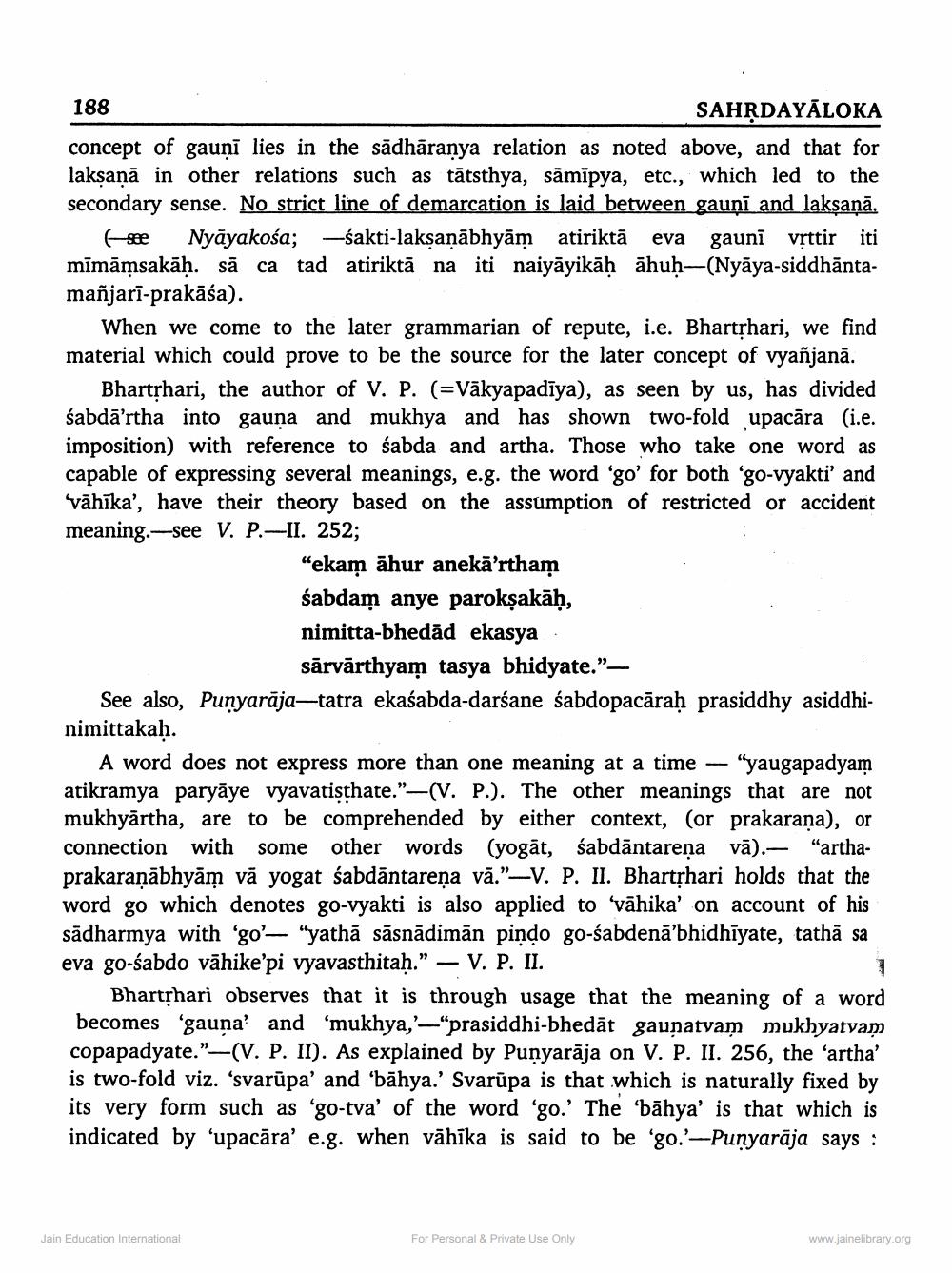________________
188
SAHRDAYĀLOKA
concept of gauni lies in the sādhāranya relation as noted above, and that for laksanā in other relations such as tātsthya, sāmīpya, etc., which led to the secondary sense. No strict line of demarcation is laid between gaunī and laksanā.
* Nyāyakośa; —śakti-laksaņābhyām atiriktā eva gaunī vrttiriti mīmāmsakāh. sāca tad atiriktā na iti naiyāyikāh āhuh-(Nyāya-siddhāntamañjari-prakāśa).
When we come to the later grammarian of repute, i.e. Bhartrhari, we find material which could prove to be the source for the later concept of vyañjanā.
Bhartshari, the author of V. P. (=Vākyapadīya), as seen by us, has divided śabdā'rtha into gauna and mukhya and has shown two-fold upacāra (i.e. imposition) with reference to śabda and artha. Those who take one word as capable of expressing several meanings, e.g. the word 'go' for both 'go-vyakti' and vāhīka', have their theory based on the assumption of restricted or accident meaning.-see V. P.-II. 252;
"ekam āhur anekā’rtham śabdam anye parokşakāḥ, nimitta-bhedād ekasya
sārvārthyam tasya bhidyate.”— See also, Punyarāja—tatra ekaśabda-darśane śabdopacāraḥ prasiddhy asiddhinimittakaḥ.
A word does not express more than one meaning at a time - "yaugapadyam atikramya paryāye vyavatisthate."-(V. P.). The other meanings that are not mukhyārtha, are to be comprehended by either context, (or prakarana), or connection with some other words (yogāt, sabdāntarena vā).- "arthaprakaranābhyām vā yogat sabdāntarena vā."-V. P. II. Bhartrhari holds that the word go which denotes go-vyakti is also applied to vāhika' on account of his sādharmya with 'go'— "yathā sāsnādimān pindo go-śabdenā'bhidhīyate, tathā sa eva go-śabdo vāhike’pi vyavasthitah.” — V. P. II.
Bhartrhari observes that it is through usage that the meaning of a word becomes 'gauna' and 'mukhya,'—"prasiddhi-bhedāt gaunatyam mukhyatyam copapadyate."-(V. P. II). As explained by Punyarāja on V. P. II. 256, the ‘artha' is two-fold viz. 'svarūpa' and 'bāhya.' Svarūpa is that which is naturally fixed by its very form such as 'go-tva' of the word 'go.' The 'bāhya' is that which is indicated by 'upacāra' e.g. when vāhīka is said to be 'go.'--Punyarāja says:
Jain Education International
For Personal & Private Use Only
www.jainelibrary.org




